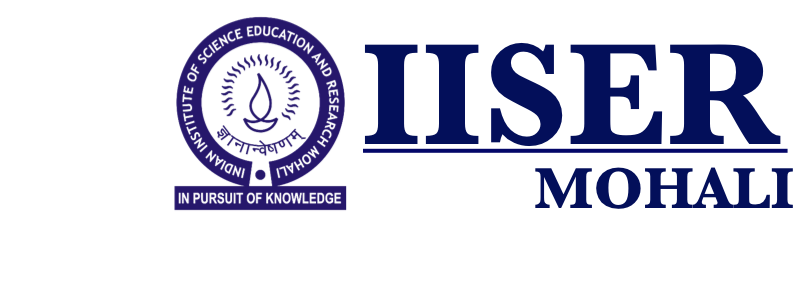IISER Mohali Hosts SKA-India Science Meeting 2026
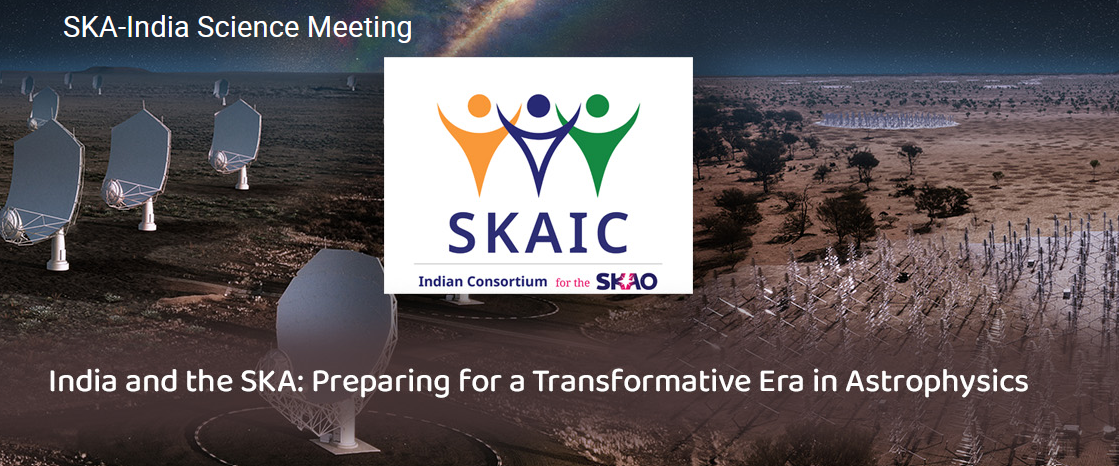
The SKA-India Science Meeting titled “India and the SKA: Preparing for a Transformative Era in Astrophysics” in January 2026 comes at a pivotal moment as the Square Kilometre Array Observatory (SKAO) enters its full construction phase. The timing aligns with critical project milestones, as the first SKA dishes in South Africa and low-frequency antenna stations in Australia are integrated on site. India’s participation as a full SKAO member, coordinated by the SKA-India Consortium, represents a significant national stake in this facility. With the prospect of SKA science now imminent, this meeting serves as a critical platform for the community to transition from planning to execution. The meeting aims to bring together the entire national community involved in scientific areas relevant to the SKA. Its programme will feature plenary reviews, contributed talks, and extensive poster sessions covering the full breadth of SKA science. In addition, dedicated discussion sessions will be central to the meeting, providing a forum to collectively prepare for the forthcoming Science Verification data expected in 2027 and strategise our participation in the Key Science Projects.
SKA-India Science Meeting titled “India and the SKA: Preparing for a Transformative Era in Astrophysics” in January 2026 is being hosted by IISER Mohali, from January 15- January 18, 2026. The link to the workshop webpage is here
The program schedule can be gound at here
Work from IISER Mohali Published in Nature Communications
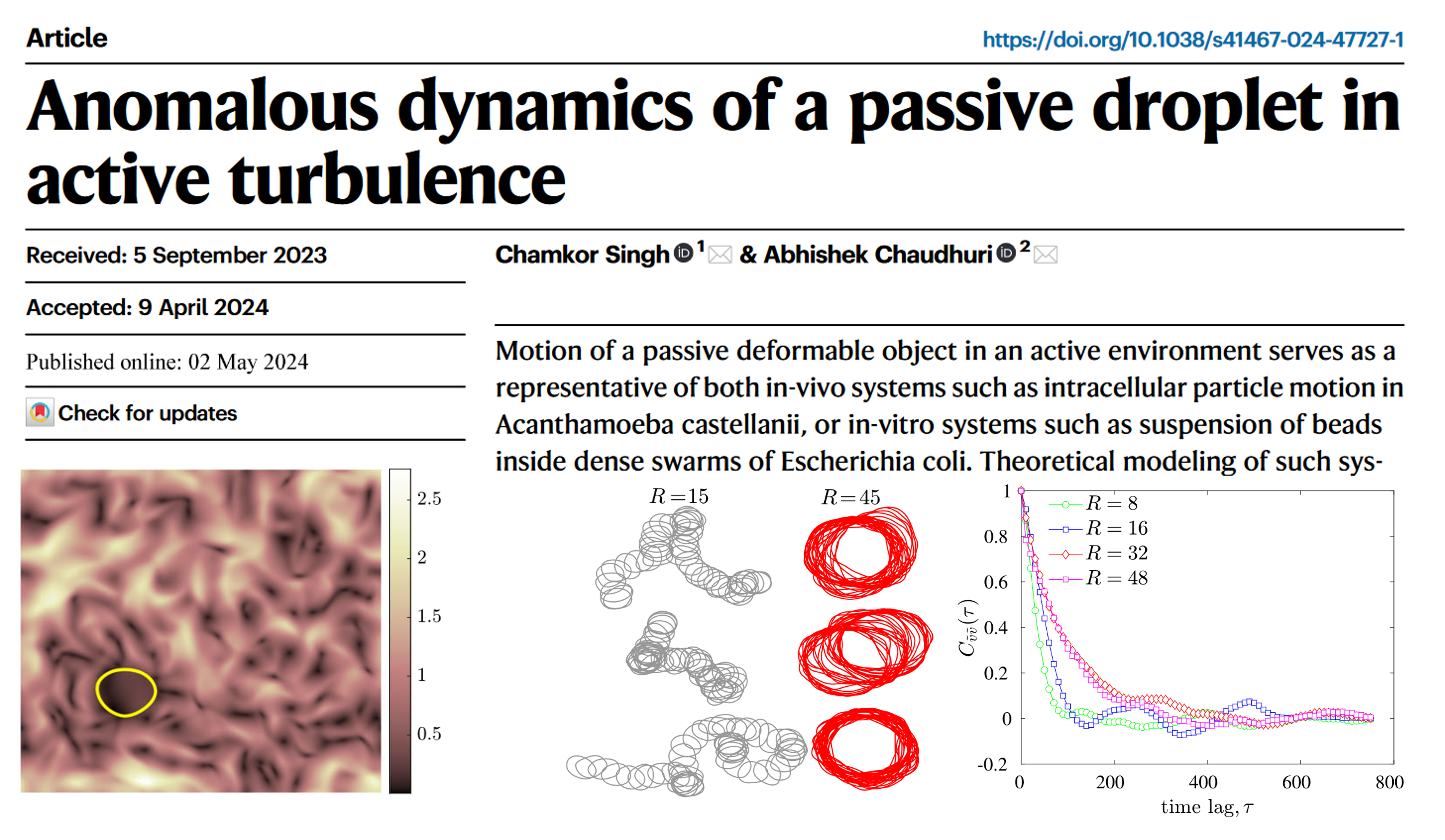
The study of passive particles within active fluids, like bacterial swarms and the cellular cytoskeleton, offers valuable insights into these complex systems. This approach, known as microrheology, can reveal properties like the dynamics of intracellular vesicles and granules through the cytosol, or the far from equilibrium dynamics of dense bacterial swarms. While recent experiments have shown some success in manipulating rigid inclusions within active fluids, the behavioud of deformable boundaries remains unexplored. To answer this fundamental question, we suspend a passive droplet as a model for a soft particle, in an active turbulent fluid. The droplet fluctuates in shape and shows periods of moving and stopping. At low interfacial tension, the droplet breaks and mixed with the outer active bath. We establish that the droplet motion is influenced by the interplay of spatial correlations of the flow and droplet size.
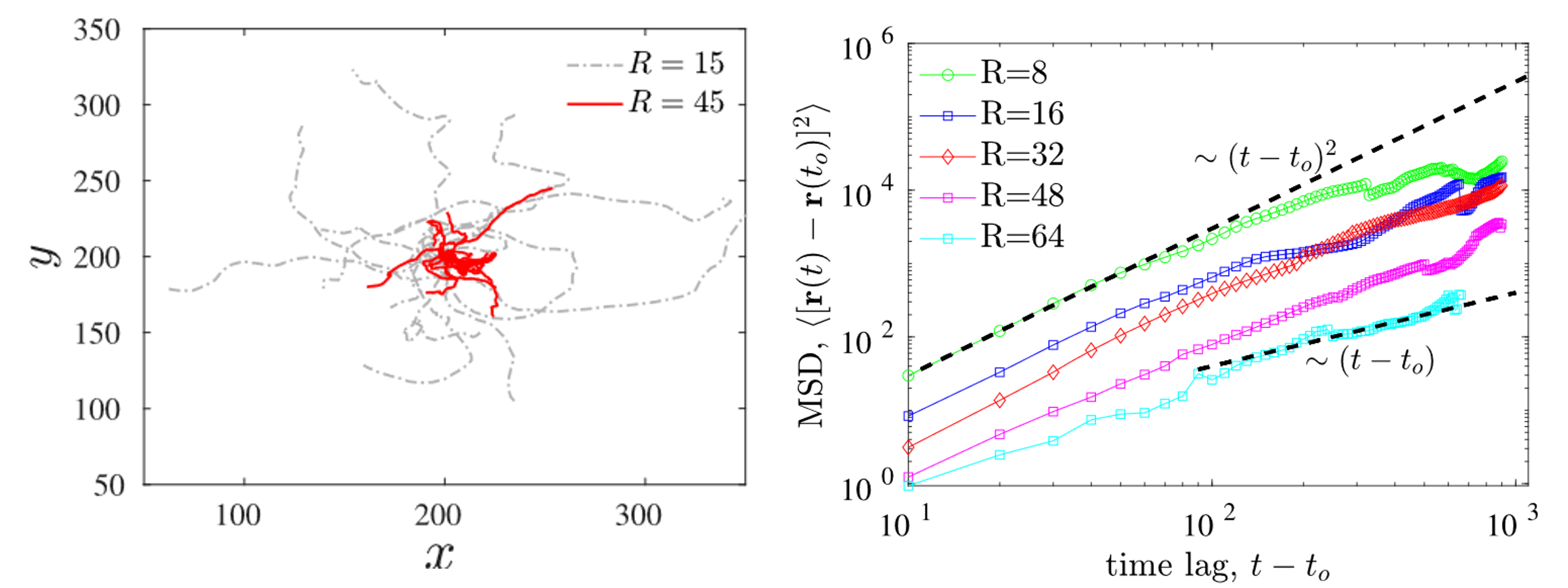
IISER Mohali Hosts the 16th International Workshop on Heavy Quarkonium (QWG 2024)
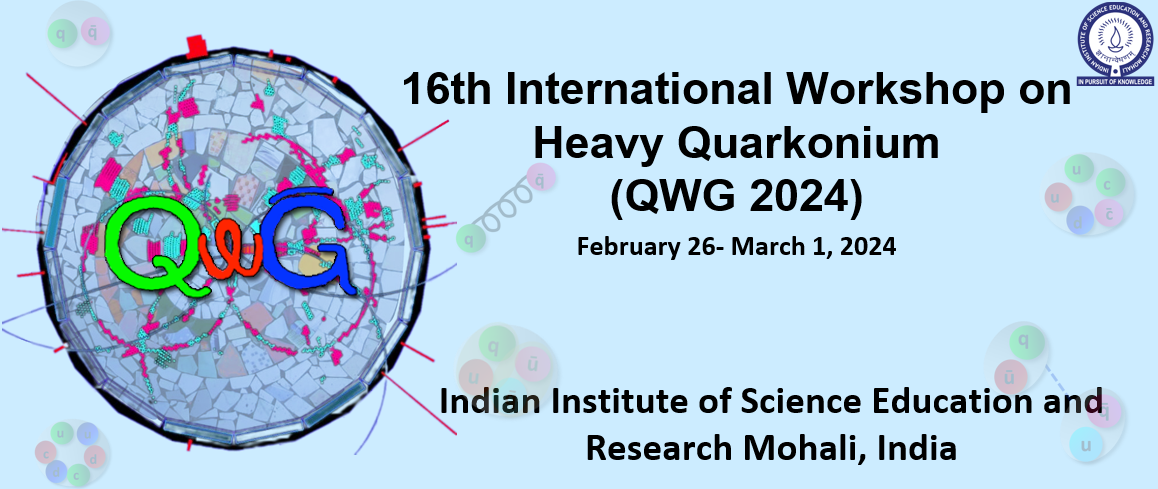
The QWG workshop is the premier opportunity for experimentalists and theorists to gather to discuss topics related to quarkonium physics. The scientific program will include topics related to heavy quarkonium in particle and nuclear physics as well as those in related fields.
The 16th Internaional workshop on Heavy Quarkonium (QWG 2024) will be hosted by IISER Mohali, from February 26- March 1, 2024. The link to the workshop webpage is here
IISER Mohali Hosts the 9th Shivalik HEPCATS (High Energy Physics, Cosmology, Astronomy: Theory and Simulations)
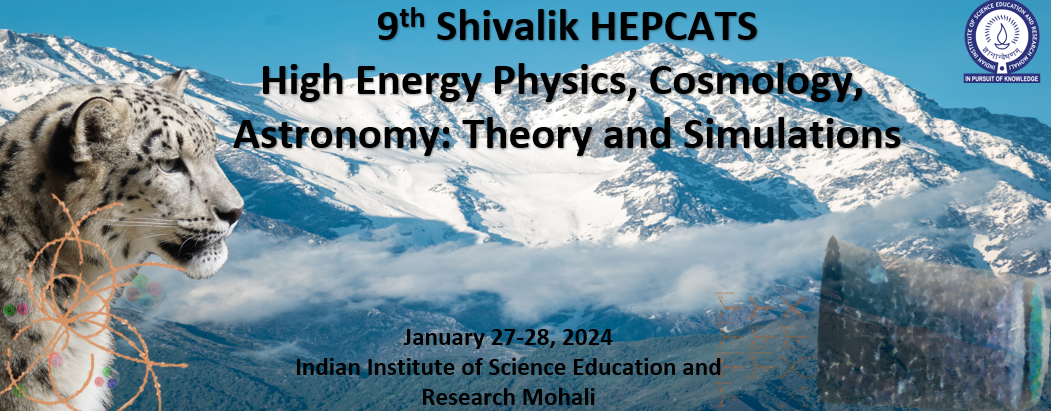
This is a regional conference for the High Energy Physics, Cosmology, Astronomy: Theory and Simulations (HEPCATS) community. IISER Mohali initiated this series in December 2019 and we transitioned to online meetings during the pandemic. Later events have been hosted by IIT Ropar, IIT Mandi, CU Himachal Pradesh, NIT Jalandhar. This brings together researchers from about ten institutions in the region and is starting to foster an understanding of work being done by different groups. It is our expectation that in coming years this will also lead to regional collaborations.
The 9th Shivalik HEPCATS will be hosted by IISER Mohali, from January 27-28, 2024. The link to the conference webpage is here
IISER Mohali Hosts the 25th DAE-BRNS HEP Symposium
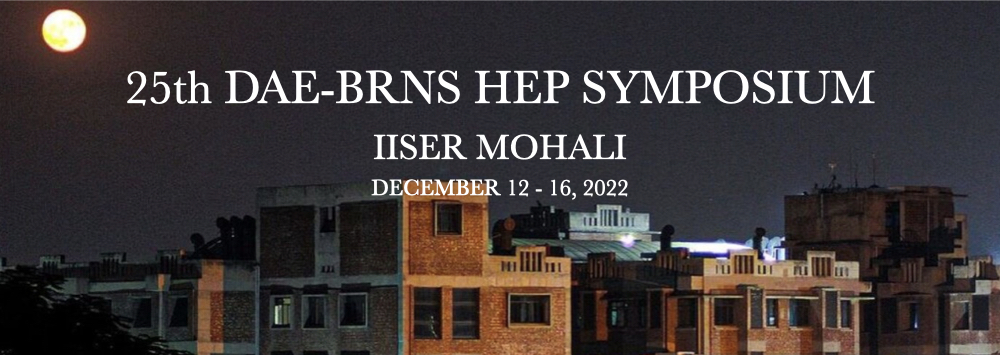
The DAE-BRNS High Energy Physics (HEP) Symposium is a premier event held every other year in India, supported by the Board of Research in Nuclear Sciences (BRNS), Department of Atomic Energy (DAE), India. The symposium will consist of parallel and invited plenary sessions. A poster session will also be held to provide an opportunity to young researchers to showcase their research. The deliberations, from both experimental and theoretical perspectives, are expected to cover a variety of topics in particle physics, astroparticle physics, cosmology, heavy-ion physics and related areas.
The 25th DAE-BRNS HEP Symposium will be hosted by IISER Mohali, from December 12-16, 2022. The link to the symposium webpage is here
Cover Image - Biophysical Journal's May 3rd 2022 Isue
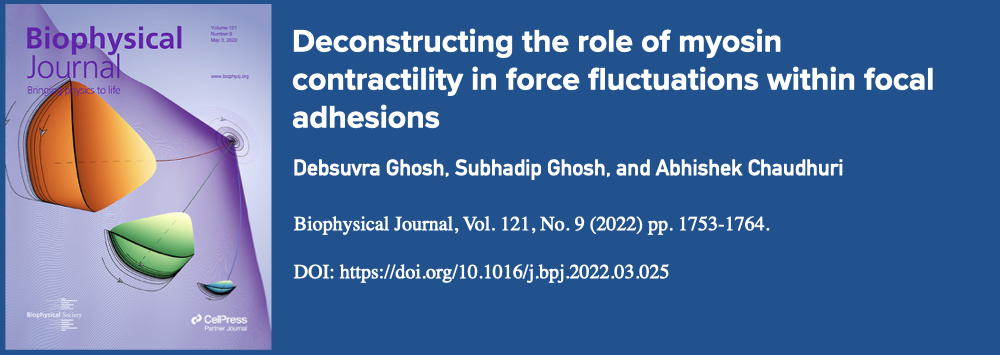
An image from the research article by Debsuvra Ghosh, Subhadip Ghosh, and Abhishek Chaudhuri from DPS has been selected as the cover image of Biophysical Journal's May 3, 2022 issue.
The article title is "Deconstructing the role of myosin contractility in force fluctuations within focal adhesions." (Biophysical Journal, Vol. 121, No. 9 (2022) pp. 1753-1764; DOI: https://doi.org/10.1016/j.bpj.2022.03.025.)
From the Biophysical Society Blog: "The cover image is an artistic visualization of the swift rise of self-sustaining fluctuating forces in focal adhesions. Three colored beanie-shaped objects represent limit cycles in myosin motor-clutch force space, with myosin active velocity gradually increasing from the tip toward the opening at three different duty ratios: low (yellow-blue), medium (yellow-green), and high (yellow-orange). Each of these three figures has in(out)ward spirals indicating stable limit cycles. The motif on the mid-right represents a stable spiral phase. These dynamic figures rest on a conflux of phase and parametric spaces, with purple waves emanating from the center of the stable spiral depicting the amplitudes of deviations from the fixed points.''
Shivalik HEPCATS Meeting - Winter 2021
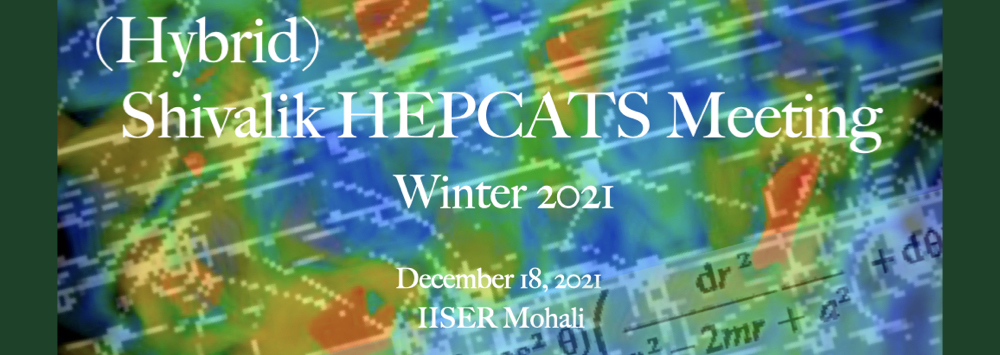
High Energy Physics group, and Astrophysics, and Cosmology group of the Department of Physical Sciences, IISER Mohali is organizing a one-day meeting Shivalik HEPCATS Meeting - Winter 2021. The organizers of the meeting are Prof. Jasjeet Bagla, Dr. Harvinder Kaur Jassal, Dr. Anosh Joseph, Dr. Kinjalk Lochan, Dr. Ambresh Shivaji, and Dr. K P Yogendran.
Congratulations to Dr. Aru Beri for being selected as a nominee for VIWA 2022
Dr. Aru Beri, an INSPIRE Faculty in the Department of Physical Sciences, has been selected as a nominee for VIWA 2022. The Venus International Foundation recognizes `Best Woman Researchers' who are demonstrated creativity and excellence in their discipline through its coveted Venus International Women Awards (affectionately known as the VIWAs). These awards are presented yearly during the Annual Women's Meet (AWM).
IISER Mohali scientists shed important new light on the astrophysics of thermonuclear bursts from neutron stars, using data collected by India’s AstroSat space telescope.
Recent research work of Dr. Aru Beri and Mr. Pinaki Roy, from the Department of Physical Sciences, has appeared in The Wire - Science.
Occasionally, the radiation emitted by neutron stars in a binary increases by about ten times within a few seconds and decays sharply to the average intensity within a couple of minutes. Scientists from IISER Mohali have shed important new light on the astrophysics of these thermonuclear bursts, using data collected by India’s AstroSat space telescope.
The link to the full article appeared in The Wire - Science is here: AstroSat Catches Nuclear Reactions Spreading Across a Neutron Star.
IISER Mohali Installs a New Dilution Refrigerator Working Down to 10 milli Kelvin
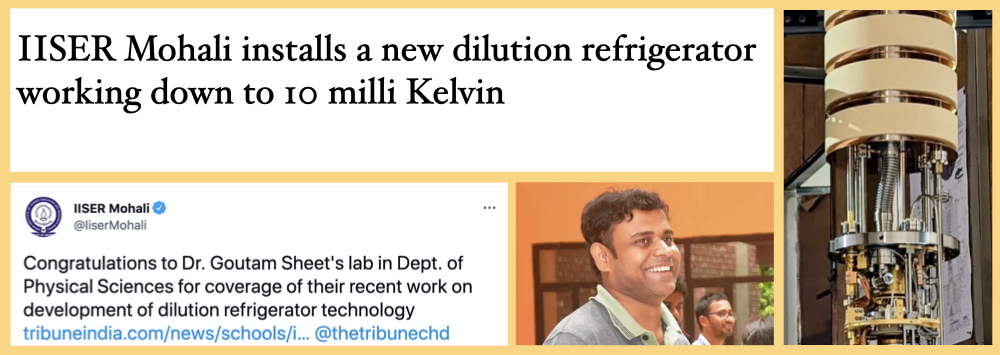
A team of scientists led by Dr. Goutam Sheet of DPS, IISER Mohali, have used cryogenic technology to achieve a low temperature of 10 milli-Kelvin or -272.99 degrees Celsius. This temperature is slightly toasty than the extremely cold world of space where the temperature is as low as 2 milli-Kelvin (-273.148 degrees Celsius).
Apart from the Indian Institute of Science Education and Research (IISER), Mohali, the other two institutes that have achieved this feat earlier include the Indian Institute of Science, Bengaluru, and the Tata Institute of Fundamental Research (TIFR), Mumbai.
Talking to The Tribune, Associate Professor Goutam Sheet said, “At the microscopic level, i.e. when the size of an object is very small, like that of an electron, the physical properties of the object becomes “spooky” and cannot be perceived by common sense that we have developed from our experience in the classical world. Such properties can be understood using the ideas of quantum mechanics.” He added, “However, controlled investigation of quantum effects in an experiment is very difficult. The “quantum signal" in experiments is so small that it is usually hidden in the background of thermal vibrations and mostly remains undetectable. Therefore, minimising temperature is the key to exploring the quantum world.”
The news article from The Tribune is available here: IISER Mohali scientists install coldest refrigerator in north India.
Team of DPS Students Publish Their Work in Physical Review E
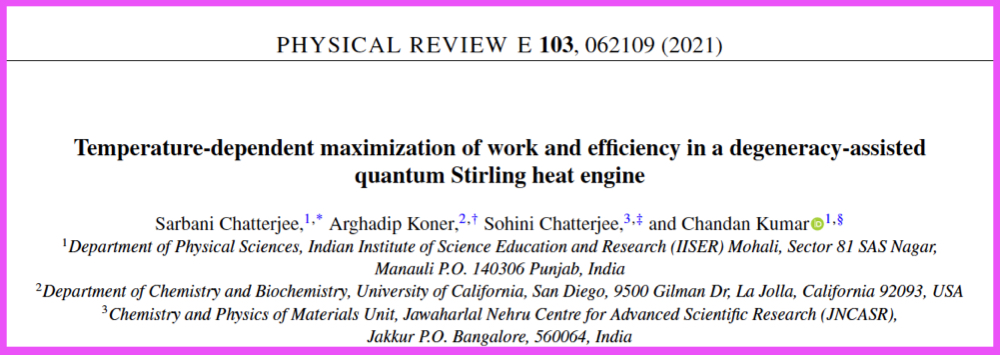
Students from IISER Mohali and JNCASR Bangalore, Sarbani Chatterjee, Arghadip Koner, Sohini Chatterjee, and Chandan Kumar, have published their work in Physical Review E.
Sarbani, Arghadip and Sohini were undergraduates, and Chandan was a PhD student at IISER Mohali when the study began.
The students have dedicated the paper (in the Arxiv version) to Prof N. Sathyamurthy (founding Director of IISER Mohali) on the occasion of his forthcoming 70th birthday.
The publication is avaibalbe here.Professor Arvind Appointed as the Vice Chancellor of Punjabi University
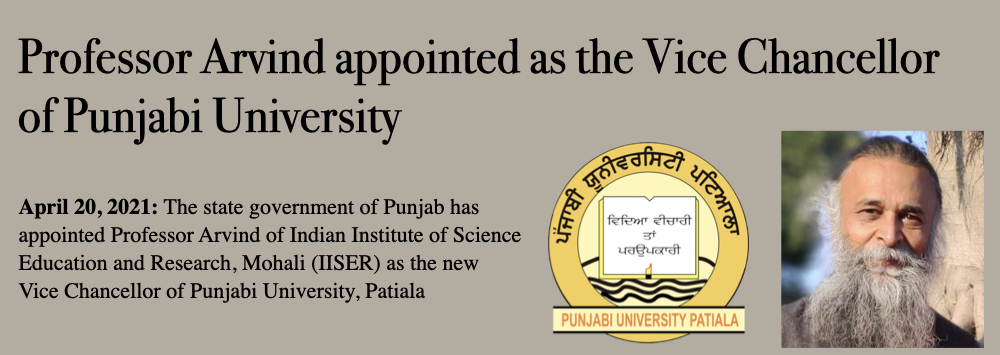
The state government of Punjab has appointed Professor Arvind (DPS, IISER Mohali) as the new Vice Chancellor of Punjabi University, Patiala.
Talking to The Tribune, Prof. Arvind said the university needs to be recovered, reconstructed and moved forward. “From the academic front, my vision is to go back to the old glory of the institute when it was doing well, and build on those areas. I want to bring in new disciplines including liberal arts education, 5-year integrated courses and data sciences to put it at par with international institutions. I would like to revamp the course work and course structure as well,” Prof. Arvind said.
The news article from The Tribune is available here: Theoretical Physicist Prof Arvind appointed Punjabi Varsity Vice Chancellor.
Work from IISER Mohali Published in Nano Letters
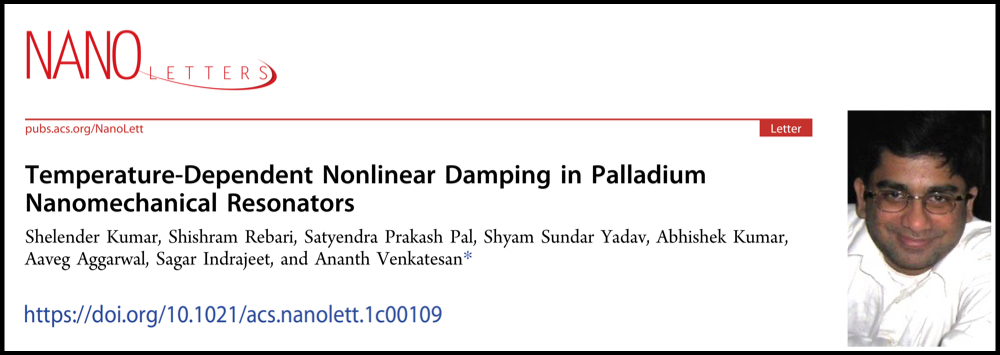
The work titled Temperature-Dependent Nonlinear Damping in Palladium Nanomechanical Resonators by the team of IISER Mohali researchers, led by Ananth Venkatesan (Associate Professor of Physics), appeared in the journal Nano Letters, published by the American Chemical Society.
The abstract of the paper read: "Advances in nanofabrication techniques have made it feasible to observe damping phenomena beyond the linear regime in nanomechanical systems. In this work, we report cubic nonlinear damping in palladium nanomechanical resonators. Nanoscale palladium beams exposed to a H2 atmosphere become softer and display enhanced Duffing nonlinearity as well as nonlinear damping at ultralow temperatures. The damping is highest at the lowest temperatures of ∼110 mK and decreases when warmed up to ∼1 K. We experimentally demonstrate for the first time temperature-dependent nonlinear damping in a nanomechanical system below 1 K. This is consistent with a predicted two-phonon-mediated nonlinear Akhiezer scenario with a ballistic phonon mean free path comparable to the beam thickness. This opens up new possibilities to engineer nonlinear phenomena at low temperatures."
The research paper is available here: https://doi.org/10.1021/acs.nanolett.1c00109.
IISER Mohali Scientist's Research Published in Nature Physics - Quantum Information
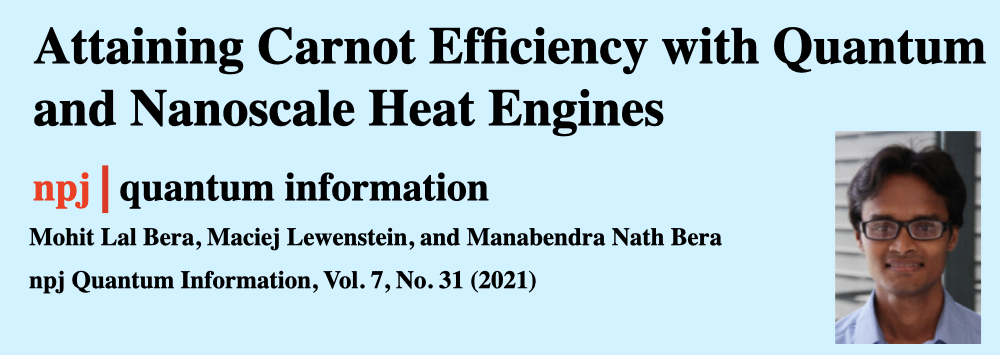
The work titled Attaining Carnot efficiency with quantum and nanoscale heat engines by Manabendra Nath Bera (Assistant Professor of Physics) and collaborators appeared in the journal npj - quantum information (npj Quantum Inf 7, 31 (2021)).
The abstract of the paper read: "A heat engine operating in the one-shot finite-size regime, where systems composed of a small number of quantum particles interact with hot and cold baths and are restricted to one-shot measurements, delivers fluctuating work. Further, engines with lesser fluctuation produce a lesser amount of deterministic work. Hence, the heat-to-work conversion efficiency stays well below the Carnot efficiency. Here we overcome this limitation and attain Carnot efficiency in the one-shot finite-size regime, where the engines allow the working systems to simultaneously interact with two baths via the semi-local thermal operations and reversibly operate in a one-step cycle. These engines are superior to the ones considered earlier in work extraction efficiency, and, even, are capable of converting heat into work by exclusively utilizing inter-system correlations. We formulate a resource theory for quantum heat engines to prove the results."
The research paper is available here: https://doi.org/10.1038/s41534-021-00366-6.
Shivalik HEPCATS Meeting - Winter 2020
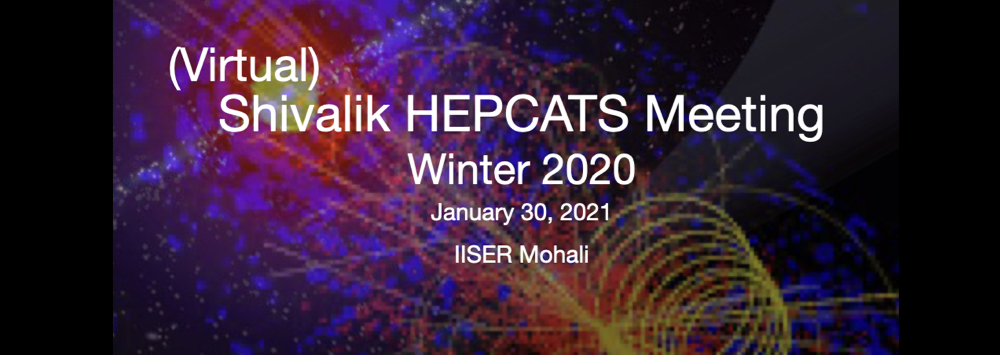
High Energy Physics group, and Astrophysics, and Cosmology group of the Department of Physical Sciences, IISER Mohali is organizing a one-day meeting Shivalik HEPCATS Meeting - Winter 2020. The organizers of the meeting are Prof. Jasjeet Bagla, Dr. Harvinder Kaur Jassal, Dr. Anosh Joseph, Dr. Kinjalk Lochan, Dr. Ambresh Shivaji, and Dr. K P Yogendran.
IISER Mohali Scientists’ Research Published in Physical Review Letters
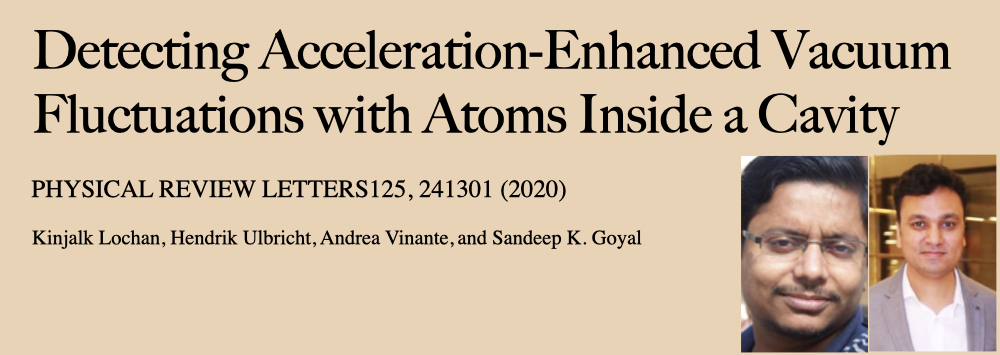
The work titled Detecting Acceleration-Enhanced Vacuum Fluctuations with Atoms Inside a Cavity by Kinjalk Lochan, Hendrik Ulbricht, Andrea Vinante, and Sandeep Goyal appeared in Phys. Rev. Lett. 125, 241301 (2020).
The abstract of the paper read: "Some of the most prominent theoretical predictions of modern times, e.g., the Unruh effect, Hawking radiation, and gravity-assisted particle creation, are supported by from the fact that various quantum constructs like particle content and vacuum fluctuations of a quantum field are observer-dependent. Despite being fundamental in nature, these predictions have not yet been experimentally verified because one needs extremely strong gravity (or acceleration) to bring them within the existing experimental resolution. In this Letter, we demonstrate that a post-Newtonian rotating atom inside a far-detuned cavity experiences strongly modified quantum fluctuations in the inertial vacuum. As a result, the emission rate of an excited atom gets enhanced significantly along with a shift in the emission spectrum due to the change in the quantum correlation under rotation. We propose an optomechanical setup that is capable of realizing such acceleration-induced particle creation with current technology. This provides a novel and potentially feasible experimental proposal for the direct detection of noninertial quantum field theoretic effects."
The research paper is available here: https://doi.org/10.1103/PhysRevLett.125.241301.
Quantum Foundations, Technology and Applications 2020 (QFTA2020)
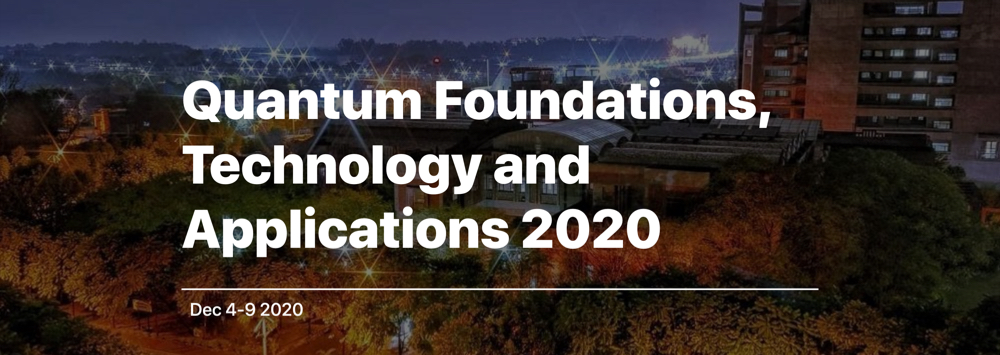
The International conference on Quantum Foundations, Technology and Applications (QFTA2020) will take place online from Dec 04-09 2020. The conference is aimed to discuss issues on foundational and technological ideas with the leading experts in the field. We are pleased to welcome outstanding and enthusiastic young speakers who would like to present their ideas. The conference will have invited and contributed talks and posters from researchers around the world.
The program link is available here: QFTA2020.
Ultra-luminous X-ray pulsar Swift J0243.6+6124 investigated with AstroSat
Using India's AstroSat spacecraft, astronomers have performed broadband timing and spectral observations of an ultra-luminous X-ray (ULX) pulsar known as Swift J0243.6+6124. Results of this observational campaign, presented in a paper published in Monthly Notices of the Royal Society, reveal more details about the properties of this pulsar. The authors include Aru Beri (INSPIRE Faculty of Physics) from IISER Mohali.
This research news has appeared in Phys.org.
Teaching physics to neural networks removes 'chaos blindness'
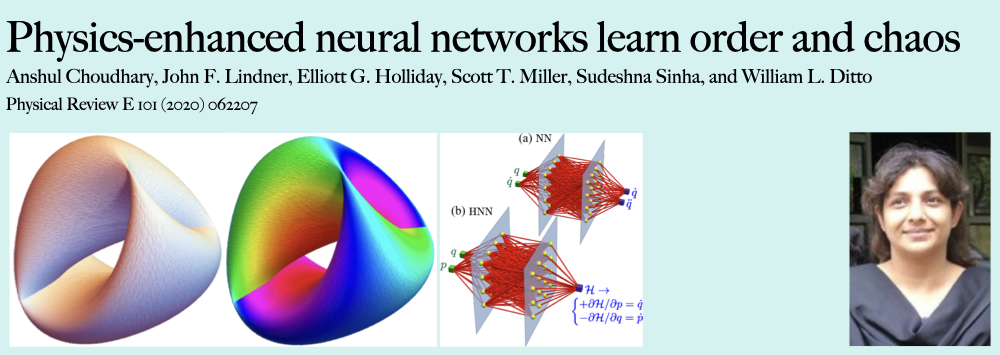
Research news in Phys.org, ScienceDaily, EurekAlert and Science Alert (June 2020), features results on physics-informed neural networks, from a paper whose authors include Anshul Choudhary (Alumni, DPS, IISER Mohali) and Sudeshna Sinha (Professor, DPS, IISER Mohali).
The research paper is available here: https://doi.org/10.1103/PhysRevE.101.062207.
Shivalik HEPCATS Meeting - Summer 2020

High Energy Physics group, and Astrophysics, and Cosmology group of the Department of Physical Sciences, IISER Mohali organized a one-day meeting Shivalik HEPCATS Meeting - Summer 2020. The organizers of the meeting were Prof. Jasjeet Bagla, Dr. Harvinder Kaur Jassal, Dr. Anosh Joseph, Dr. Kinjalk Lochan, Dr. Ambresh Shivaji, and Dr. K P Yogendran.
Results for the Admission to Integrated PhD Program in Physics for August 2020 Session
DPS completed the selection process of Integrated PhD Program in Physics for August 2020 session. The details of the selected candidates are available here.
Results for the Admission to Integrated PhD Program in Physics for August 2020 Session
DPS completed the selection process of Integrated PhD Program in Physics for August 2020 session. The details of the selected candidates are available here.
Department's Scholar Day - Even 2020
Department of Physical Sciences will be organizing the Department's Scholar Day on February 22nd, 2020.
DST Approves FIST Proposal
Our departmental FIST proposal has been approved by DST. A support of Rs. 2.85 Cr over a period of 5 years has been recommended.
ICGC 2019
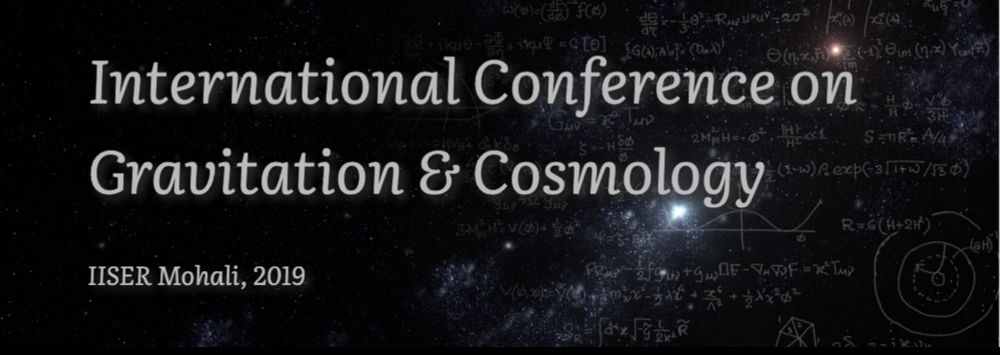
IISER Mohali hosts the 9th International Conference on Gravitation and Cosmology (ICGC). The Chair of the conference is Dr. Harvinder K. Jassal. The organizers are Prof. J. S. Bagla, Dr. Kinjalk Lochan, Dr. Smriti Mahajan and Prof. Kulinder Pal Singh.
Shivalik HEPCATS Meeting - Winter 2019
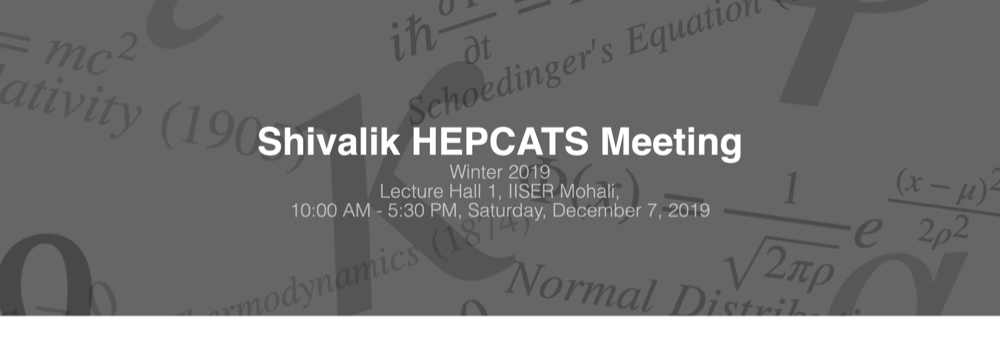
High Energy Physics group, and Astrophysics, and Cosmology group of the Department of Physical Sciences, IISER Mohali organized a one-day meeting Shivalik HEPCATS Meeting - Winter 2019. The organizers of the meeting were Prof. Jasjeet Bagla, Dr. Harvinder Kaur Jassal, Dr. Anosh Joseph, Dr. Kinjalk Lochan, Dr. Ambresh Shivaji, and Dr. K P Yogendran.
Research News from Astrophysics and Cosmology group appears in The Indian Express
A news article titled "Team of scientists measures atomic hydrogen gas that formed galaxies" appears in The Indian Express. Congratulations to the Astrophysics and Cosmology group on their new findings!
QFTA 2019
Department of Physical Sciences, IISER Mohali organized an international conference on "Quantum Foundations, Technology and Applications QFTA-2019" during October 18-21, 2019. The conveners were Prof. Kavita Dorai and Dr. Sandeep Goyal, and the local organizing committee comprised Prof. Arvind, Dr. Ananth Venkatesan, Dr. Manabendra Nath Bera and Dr. Mandip Singh, from the Department of Physical Sciences, IISER Mohali.

